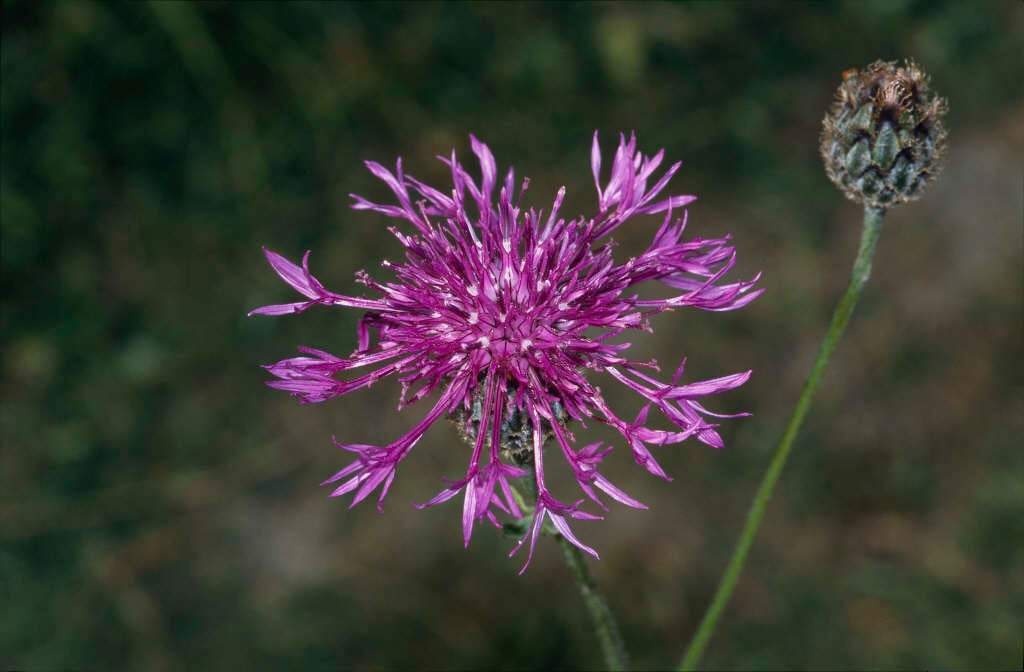Centaurea scabiosa
greater knapweed
An upright perennial to about 1.5m, with branched stems and greyish-green, broadly lance-shaped leaves to 25cm long, and reddish-purple flowers heads to 5cm across, usually with enlarged outer florets, from mid to late summer

Buy this plant
Size
Ultimate height
1–1.5 metresTime to ultimate height
2–5 yearsUltimate spread
0.5–1 metresGrowing conditions
Moisture
Well–drainedpH
Acid, Alkaline, NeutralColour & scent
| Stem | Flower | Foliage | Fruit | |
| Spring | Green | |||
|---|---|---|---|---|
| Summer | Red Purple | Green | ||
| Autumn | Green | |||
| Winter |
Position
- Full sun
Aspect
West–facing or South–facing or East–facing
Exposure
Exposed or Sheltered Hardiness
H6Botanical details
- Family
- Asteraceae
- Native to GB / Ireland
- Yes
- Foliage
- Deciduous
- Habit
- Clump forming
- Genus
Centaurea may be annuals, perennials or subshrubs, with simple or pinnately lobed leaves and showy thistle-like flowers-heads, often with enlarged outer florets
- Name status
Correct
- Plant range
- Europe, Temperate Asia
How to grow
Cultivation
Prefers well-drained soil in a sunny position. Especially tolerant of dry alkaline soils
Propagation
Propagate by seed in spring, or propagate by division in spring or autumn
Suggested planting locations and garden types
- Wildlife gardens
- Wildflower meadow
- Cottage and informal garden
- Flower borders and beds
Pruning
Self-seeds readily so prune after flowering if seed is not required
Pests
Generally pest-free
Diseases
May be susceptible to Powdery mildews
Love gardening
Sign up to receive regular gardening tips, inspiration, offers and more
View our Privacy Policy
Get involved
The Royal Horticultural Society is the UK’s leading gardening charity. We aim to enrich everyone’s life through plants, and make the UK a greener and more beautiful place.